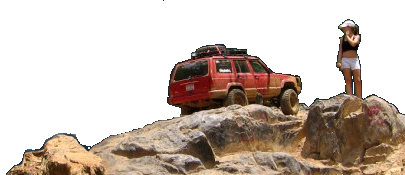what great timing, I've been struggling with this all weekend!
In my case, counter-sunk flush-topped Allen head bolts, attaching skid plate to a Budbuilt t-case X-member and the trans mount to the x-member.
All very much rusty and stuck,
It seems the biggest problem is surface area (or lack thereof) to get a good clean strong weld onto. As mentioned, if too much force is needed the newly welded area just breaks off, mostly b/c (a) it's unlikel yto be a good clean weld and (b) pretty small.
Not to mention that you have to be really careful around the edges of the tip you're trying to attach to, b/c if it spills over you risk welding the bolt shread into te hhousing!
I like yager's idea of first covering the area w/ a washer, they key would be getting one that has an ID that just barely squeezes over teh broken stud, prob even needs hammering on around it. Then weld them together - that give you lots mroe area for a bigger nut.
The hard part seems to be getting a nice "fill" of the nut, since you're going inside a hole.
Re: heat shock, if you heat the block the stud is in, that should actually make it tighter too - b/c the metal surrounding teh threads expands, making the hole (which te hstud fills) smaller.
The trick should be freezing the stud, so it shrinks relative to teh surround.
A good way to do this (if yo udon't have a cool can of freeizing air), is to use a can of "air" found in offices for claening keyboards etc. Hold it upside down, the propellant is liquid, and freezes the air during expansion as it exits the can.


